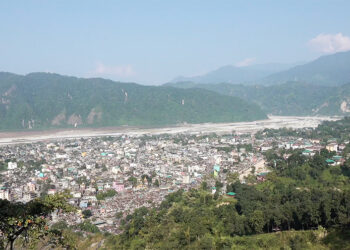 From showcasing the rich nomadic lifestyle to the local cuisines, the 8th Haa summer festival this year saw hundreds of locals and tourists, despite continuous rainfall. The festival was initially started to create opportunities for tourism development in the dzongkhag.
From showcasing the rich nomadic lifestyle to the local cuisines, the 8th Haa summer festival this year saw hundreds of locals and tourists, despite continuous rainfall. The festival was initially started to create opportunities for tourism development in the dzongkhag.
The two-day festival ended yesterday.
Tashi Tobgay’s stall of artefacts was among the many stalls set up at the public ground in the Haa town. Some of the artefacts in his stall date back to the 17th century. 36-year-old Tashi has a little knowledge about the artefacts at the display. But the elders at the festival recall that the hats, sword and shield belonged to the house of Drukgyal Dzongpoen in Hatoe in Bji Gewog.
“We don’t know much about history. These things actually belonged to Doenngyer Sangay Dorji. I can’t exactly tell when and who actually owned it. Even my parents have a little knowledge of it. Every year we perform pawo called Dar-Lha, where we have to climb the rooftop and perform it. We only use it during that time. Otherwise, we keep is in our altar,” said Tashi Tobgay.
He added that he set up the stall to attract more tourists and locals from other districts to visit Haa.
Similarly, Yeshi Lhaden’s stall consists of the products made from yaks and natural herbs by the Haa Community Based Sustainable Tourism group. For this group, it is one of the ways to earn money to facilitate more unemployed youth into learning arts and crafts using local produce.
“I came to sell key hangers made from Yak’s fur by the members of CBST. Graduates, class 10 and 12 dropouts who are unemployed participate in this group and we weave key hangers. We also have incense powder made from natural herbs found here in Haa. We sell these to make some money for our group.”
There were also food stalls with cuisines such as Hoentey and Kheythu and locally brewed alcohol and dairy products for sale.
“Summer festival is a source of income for us. We prepare different cuisines for the visitors,” said Tshering Pem.
As part of the festival, traditional sports, religious and cultural programmes were held.
Meanwhile, locals said the summer festival has contributed to increasing the number of tourist arrivals in the district. Last year, going by the Bhutan Tourism Monitor 2018, over 6,600 tourists visited Haa.









